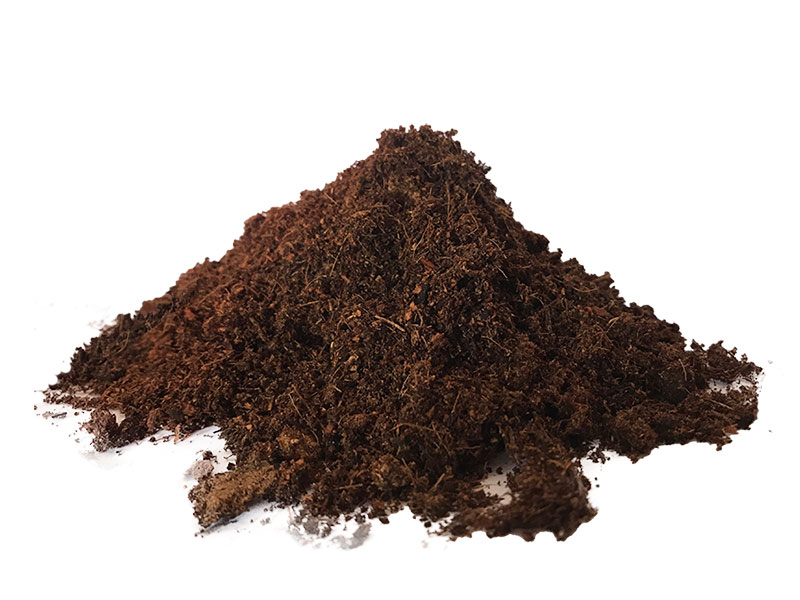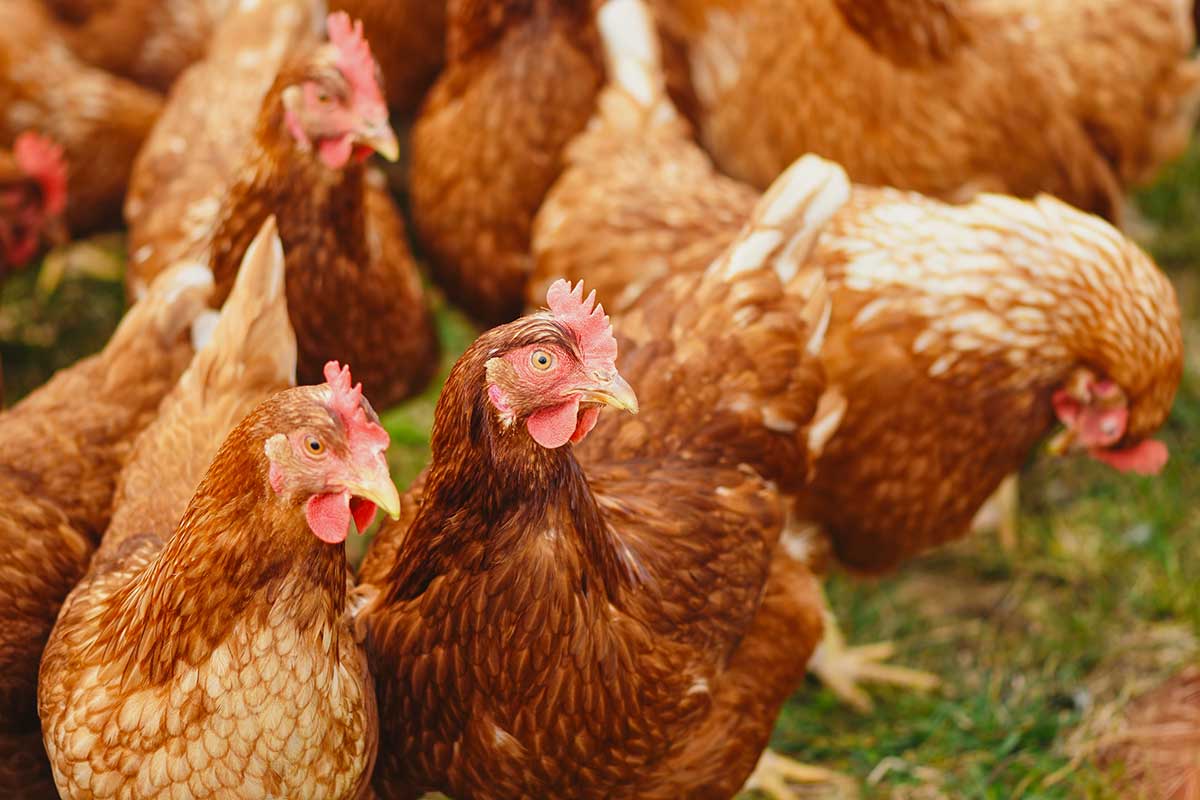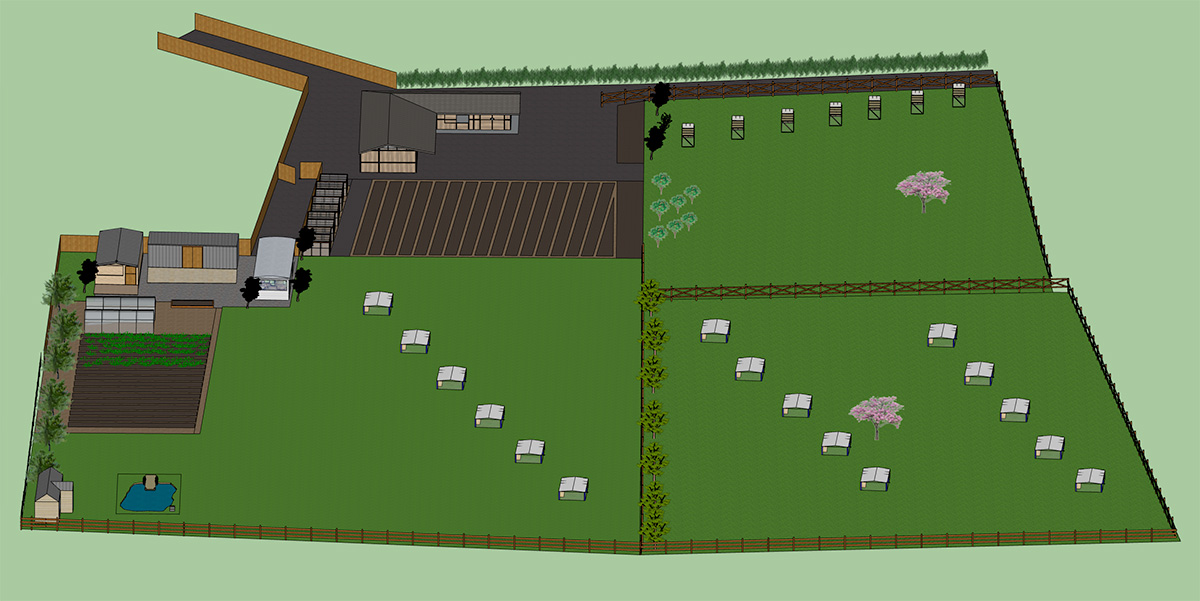Composting on a large scale is pretty simple. Even easier when you know how to find the materials to use.
If you’re starting a small farm or market garden of any scale you are going to need plenty of compost. The only thing better than good compost is “Free Compost”.
Especially when starting a farm that is going to be producing vegetables or salad greens. Then having the best soil possible is a must. I would always advise that you start your composting as soon as possible.
Getting your farm or market garden layout and setup will take time. Especially if you are going to be clearing land or erecting a few buildings.
If you start your composting first and foremost. It will be ready when you need it. Composting takes months to break down the material matter to that black gold you will be using for your soil. It makes sense to start this process first.
Composting is not rocket science there are a few rules to follow when making your own that’s all. If you follow these rules you will have plenty of black gold to use on your land.
Remember this post is to show you that composting on a large scale for free is easy. It is not for your small amount of household compost but the process is still the same.
I will also not be going into the science behind composting. We will leave that to the academics if you want to get into the science behind the whole process. Then there is an excellent link below where you can download a “PDF”
What You Want Is Free Materials For Your Compost Piles And Lots Of It..?
We will also talk about how to make it. Meaning the processes used to get your composting materials to turn to compost black gold.
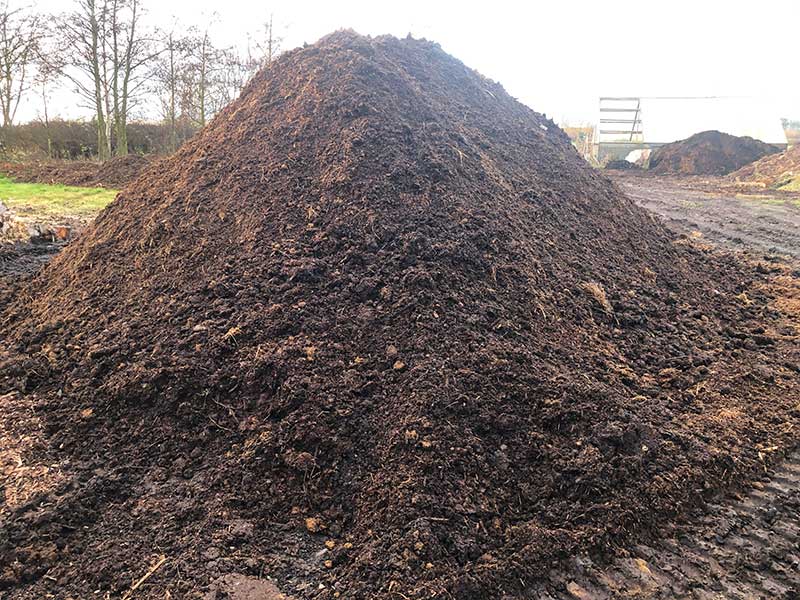
Manure Based Composting
Manure-based composting is what we like to use for our small farm. There are plenty of farms where we are based. So there is plenty of animal manure around. These farms are more than willing to give you this manure. I’m sure you can find a couple of local farms to you.
They even delivered it to us in 20 Ton loads which is great. All the materials we use for our composting is free and delivered to us free.
The animal manure we use is Horse and Cow. This is the most plentiful. But you can use other animal manures a little list below.
- Horse
- Cow
- Sheep
- Chicken
- Rabbit
- Pig
Now I don’t want to get into what all these different manures have in the way of how many nutrients each will give you. Except chicken is really high in Nitrogen so be careful with that one unless your soil is in need of lots of nitrogen.
We use Horse and Cow Manure which we think are the best overall animal manures to use. Also because we have easy access to it for free. I’m sure you will find local horse owners and cow farmers local to you?
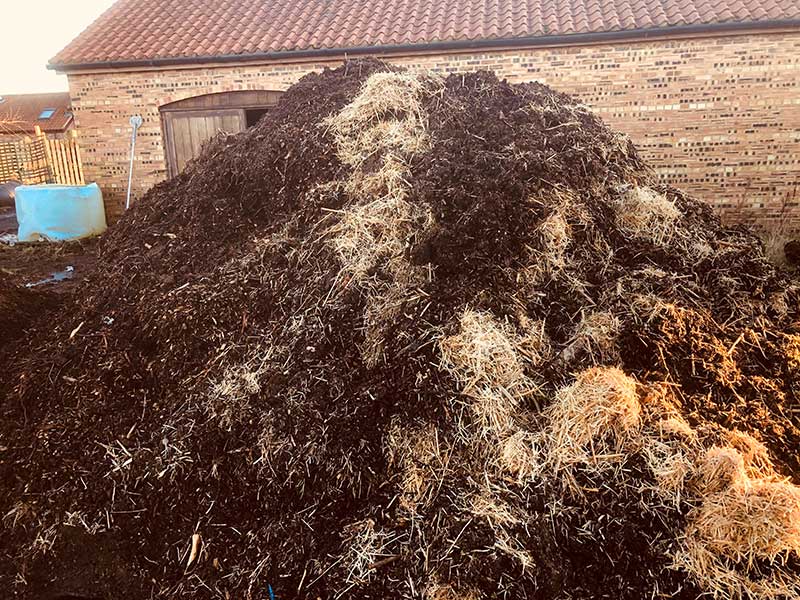
Building Several Piles Of Compost
If you’re composting on a large scale you will want to build several piles. This makes it easier to turn by hand. If you do not have a machine of sorts to turn it with. Also, you will have different aged piles over time.
Now you can also start to use different materials in different quantities and see which works best. You will soon learn which is best for your area and land.
Then test which compost is working best for you and your soil. You will soon find which of your compost piles is growing the best crops. Also, you will find which is the best compost for different crops.
This may all sound a little to much work. But I can assure you it’s not especially when you see the fruits of your labor.
Where To Find Your Composting Materials Free
When we first started to build our composting piles. We introduced ourselves to local Cow Farmers and Horse Livery Stabling Businesses. They were more than happy to give us free manure and they even delivered it. We are talking 20-ton tractor loads of manure at once.
Yes, we were local, less than a mile or so. If you are further away you may want to give them a little delivery money.?
This will keep them happy and it will pay for their fuel costs to deliver. Farmers are more than happy to help out other farmers. They like to have friends just like any other person.
I then found local Landscaping Businesses and contacted them through Facebook or a quick email. Asking if they want to tip their grass cuttings and leaves etc for free. I would even take soil from them and mix it in the compost pile.
You can also ask local Tree Surgeons for Wood Chippings who will gladly tip them for free. Raw wood chippings will rob your soil of nitrogen if added fresh to your soil.
But if you compost them they will break down. They may take longer to break down but they soak up all the other nutrients in your pile. Wood chippings also give plenty of aeration as they are large and let the air through the pile of compost. This is needed for the whole process to work fast and efficiently.
Then you also have all your household leftover green waste to add to your compost piles. This may not be much but it all helps to make good compost.
Also, ask your neighbours for their waste grass clippings and green waste. All of these materials, when added, will make your composting piles nutrient-rich. This will all help to get you composting on a large scale.
Brown and Green Materials
When building your composting piles, you will want to mix your animal manure “which is classed as green” with the right amount of browns “which is wood chippings” etc.
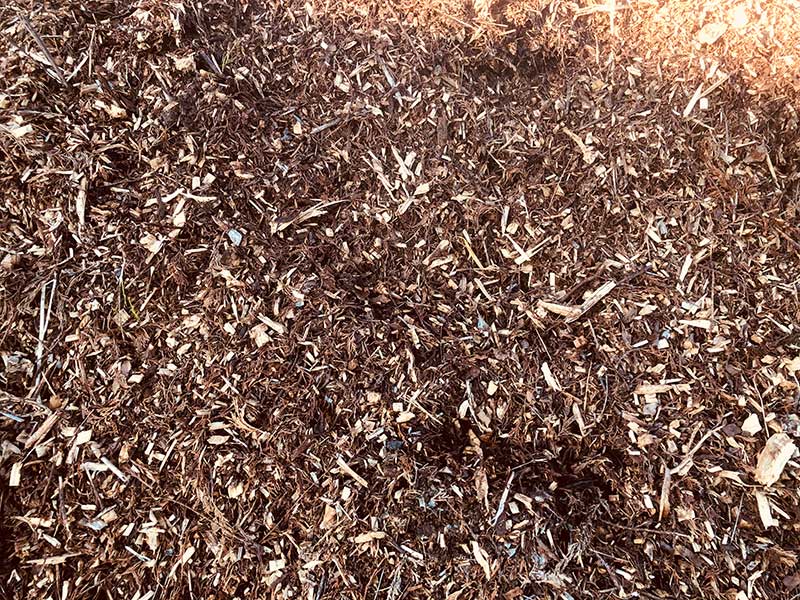
Browns You Can Use To Compost:
- Leaves
- Straw
- Paper & Cardboard
- Sawdust
- Wood Ash
- Wood Chippings & Bark,
- Tea Bags
- Hay
Greens You Can Use To Compost:
- Grass Clippings
- Coffee Grounds and Tea bags
- Vegetable and Fruit Scraps
- Trimmings Perennials and Annual Plant Cuttings
- Annual Weeds that haven’t Set Seed
- Eggshells
- Animal Manures (Cow, Horse, Sheep, Chicken, Rabbit)
- Do Not Use Dog Or cat Droppings
Mixing Your Compost Piles Ratios
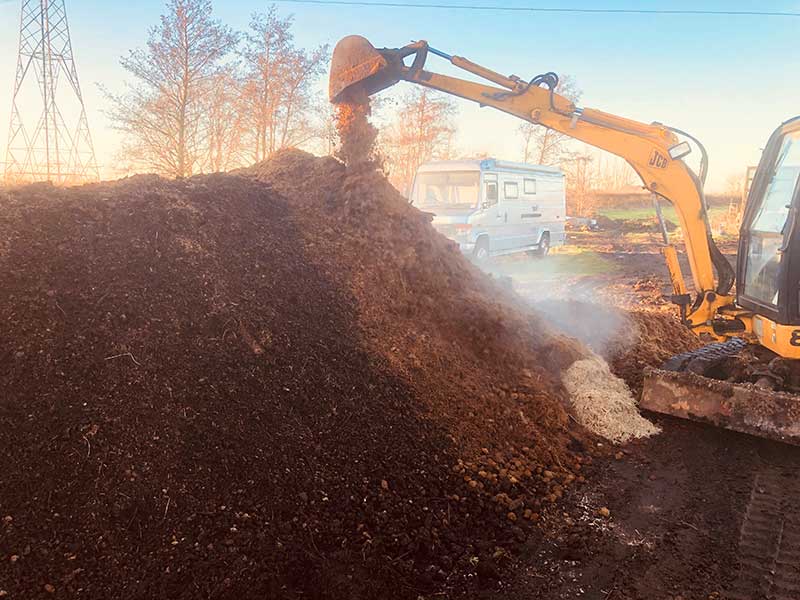
Composting includes finding a good mix of “browns” and “greens.”
Green materials are rich in nitrogen or protein. These are also the items that tend to heat a compost pile up. They help the microorganisms grow and multiply quickly.
The Browns are carbohydrate-rich materials. The job of your browns is as food sources for all the soil-dwelling organisms. These work with the microbes and break down the contents of the pile. Browns help to bulk out your compost. They also help with allowing air to filter through the pile like the larger wood chippings.
Now when mixing your piles look at what the animals were bedded on. Was it Straw, Sawdust or Woods shavings.? As you can see in the lists above this can make a difference.
We like to use around 3 parts brown to 1 part green. You can experiment with this ratio it does not have to be this amount. Try and experiment with your compost piles to find what works best for you.
Making the perfect compost that will satisfy every single person would be impossible. The best you can hope for is to make the best compost for you with the materials you have. If you don’t have any materials you will have to purchase it in.
The whole point I am trying to make is that you do not have to. You can find plenty of materials to compost locally to you. That is unless you live on a baron rock.
Composting No It Alls
Some people will tell you one thing and others will tell you another. The thing that matters most is what works for you and what you are happy with.
You will always get one person who thinks they know everything around composting. Maybe they do know a little more than others. But their word is not gospel. Your land may be different from theirs and may need different compost.
I haven’t spent my life making compost and I don’t want to. But I have read plenty of books from different sources and watched lots of videos on the subject. They are all different views in their own way but the principles are still the same.
My main reason for writing this post. Is to show you how to get your materials for composting on a large scale for free.
If you don’t find the right mix ratio first time then tweak it a little until you do.
Heating Up Your Composting Piles
It is really important to get your pile of materials up to the right temperature. If you do not get the temperature up high enough it will not break down the materials and may start to smell.
This is where you would tweak your pile and maybe add some more green into the pile. Or maybe a little water.?
Purchase yourself a couple of Temperature Gauges these can be a couple of feet in length. It all depends on how big your piles are. I tend to have piles of compost around 6ft to 10ft in height by around 10ft to 15ft in diameter.
You want to get somewhere close to the center of the pile to get the right temperature readings.
Once you have the temperature high enough the materials that you have used will start to break down. This is not a hard thing to do and you will soon get the hang of it. Trust me I did not know a thing about composting and it took all of a couple of weeks to get up to speed.
You want a temperature reading of over 120f. I usually aim for around 150f. The hotter the faster it will break down the materials. The faster your compost will be ready to use.
This is really important and must be kept an eye on. So purchase thermometer
Heating the compost also kills off any weeds that may be in there. It will also kill off weed seeds that may have come from animal manure etc.
Turning Your Compost Piles
This is also a very important step is to turn your composting piles regularly. If they are large piles as mine are then I do it every couple of weeks and you can see how hot it is in there. It is really hot to give you an idea of how hot it is. Think of a bath that is not boiling but not warm somewhere in between.
Turning your pile helps to aerate the compost adding air into the piles. Now if you’re building large piles like I am in the images seen in this post. It would be hard to turn by hand.
You could build lots of smaller piles and turn those by hand. But what I tend to do is hire a digger. I wait till I have a couple of jobs I want to do around the farm and then hire one for £50 per day. I then turn the pile and do the other jobs I want to do.
You will save more than the cost of the digger hire in time alone. While also getting other jobs done around your small farm. You can also sell some of your finished compost to cover the cost of the digger hire.
You may have a small tractor with a bucket on the front. If you do, this will do fine for turning your compost. But even if you have to hire a digger you will more than cover the cost in the amount of compost you have
Now once you have the temperature and the turning down to what you are happy with.
The Compost Changing Colour
You will see the compost piles turn from a lighter multi-colored material to a darker one colour material over time.
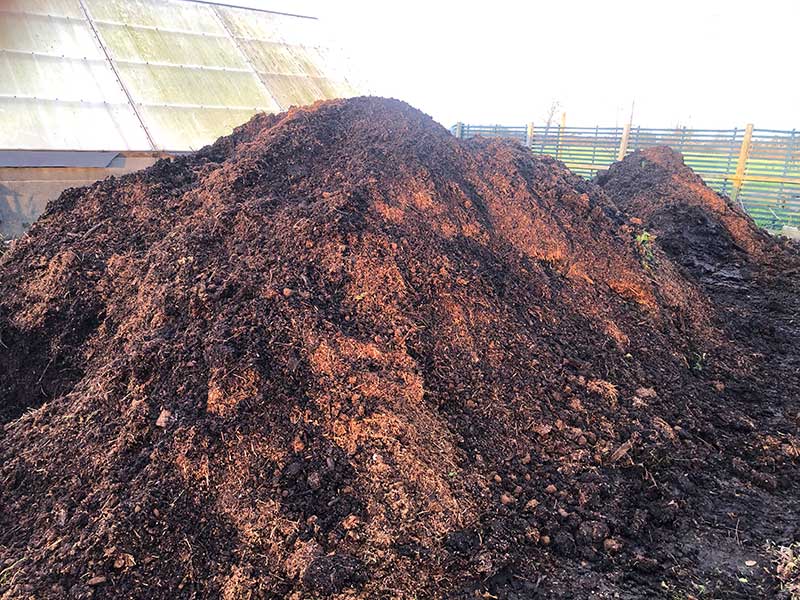
This is when you know the process is working. Remember to remove your temperature gauges when turning or you may lose them or worse still break them.
The time it takes to fully compost will depend on how you have been successful keeping the heat up. Also turning and keeping the compost moist.
Once you have your compost piles at stable temperatures of around 120f to 150f. Then you want to decompose for another 6 months or so. But the longer it is left the better it will become.
You still have to keep turning the pile after they reach the temperature. Then they will heat up again and again after each turn until the process is finished.
I have horse manure which was mixed with straw as bedding and it is around 2 years old and is perfect rich soil full of nutrients. There is no smell and it is full of worms. You would not believe the amount that is in one spade of this manure.
Remember to Keep Your Compost Piles Damp
It’s important to keep your composting piles damp all the time. If they dry out the process of breaking down will stop and the same will happen if you add to much water. If you add to much water then the compost will not heat up enough for the process to work.
Choosing The Right Spot For Your Composting Pile
You do not want to have your compost pile anywhere near an open water source. Keep your compost piles away from open streams and brooks. It will contaminate the water if you have it to close.
Your compost piles will leach fluids that will harm water sources and that is not good. It’s not good for the environment and it’s going to get you into trouble if you are ever found out. It is not also good for your personal ethics and is wrong.
We use an old yard that was once sold plant and it has a lot of hard standing. this way we can be sure that there is nothing leaching from the compost pile into any water source.
So pick out a corner of your land that is unused for anything. Use that area especially for your composting piles. Over time you will acquire so much that as I mentioned above you may be able to sell a little. Keen gardeners and small market gardens are always looking for decent compost.
Potting Compost
If you are wanting some posting compost this is not the best to use as it is. It will still have lots of larger pieces of woodchippings. But if you have a riddle and you riddle it to remove the larger pieces of woodchips it would be great to use as potting compost.
Adding Worms To Your Compost Piles
If you are composting on a field or soft ground you will probably see that the worms will find their own way into the pile of compost. But as we are composting on a large hardstanding we like to add some worms.
Now we do not purchase these worms. We make several large raised beds around 4.8m by 1m in one of our fields. Then fill it full of horse and cow manure and before you know it they are full of worms.
After that take a few shovel fulls and put them into polystyrene boxes that we get free from the local pet store. I think they get fish delivered in them. These make excellent worm cultures. They keep the worms warm and we just feed them more manure. They breed like crazy and this gives us enough worms to throw on the compost piles.
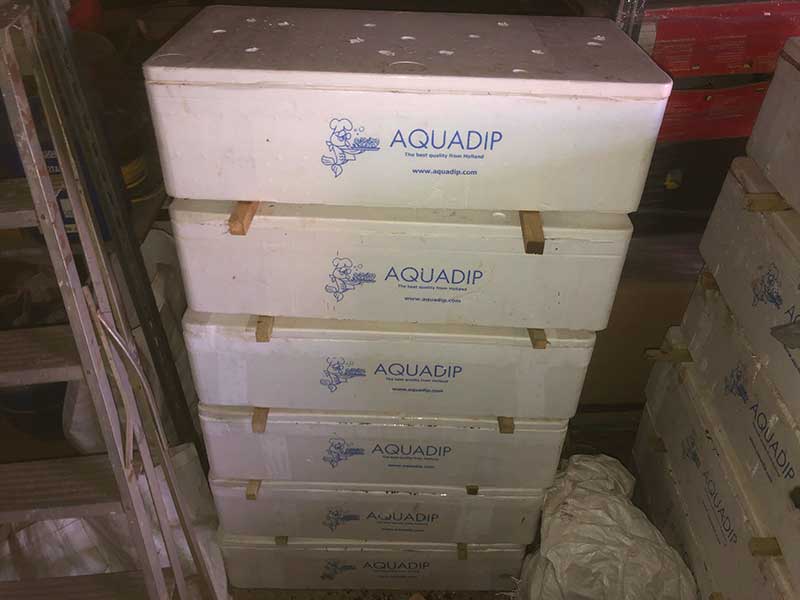
Remember to do this when the pile is almost finished breaking down. Do not through the worms in when the compost is still really hot. Waite till the composting process is nearly finished and the piles are cooling down.
Once the worms have done their job. The compost will be so soft and rich in nutrients that you will barely recognize what you started out with.
Also, take some of the worms out and start more worm cultures. This is the best way to keep your worm cultures going year after year.
You can also start to collect the worms juices. I will show you how you can do this in another post. It is pretty simple you just place your worm cultures over a simple wooden trough and line it with plastic. Place holes in the bottom of your worm cultures and the liquid will start to flow
This is what gardeners and farmers call ‘liquid gold’, it is a magical elixir that provides billions of good microbes such as fungi, and helpful, nitrogen-fixing bacteria for your plants and veggies.
Testing Your Compost Piles
Now you could just go down the route of testing your compost straight by introducing it straight into the ground. We do this on a small scale of course but we still test it. We also have soil testing kits and we use this too.
Going down the route of using a soil testing kit. You should have one to test the soil you will plant in on your land. You never know your soil could turn out to be really rich in nutrients (very unlikely) or it could turn out to be very poor.
This is what you will find in most soil unless it has been fertilised in the past somehow. These testing kits will tell you how good your soil is or how bad it is.
These are also good to test how good your compost is and when you put the two tests together. You will then know exactly how much compost to add to your soil. Giving you the perfect soil to work with and there is no guessing involved.
That’s It Your Compost Is Ready To Use
That is all there is to it once your compost piles have broken down all the materials. You will know that this has all happened when it starts to cool down and looks more like soil. If you can find your materials to compost on a large scale for free then you are halfway there.
If you want to go further into composting you can download a PDF HERE on The Art And Science Of Composting. It is a pretty good read on the actual science side of composting.
All you need after that is a little time and a little of nature itself to do its work. After that, you will have as much compost as you could ever use totally free.
If you are interested in getting other free things why not check out my post on getting free or cheap building materials. Here How To Find Cheap Building Materials. You will find I get more things free than I do cheap.?

